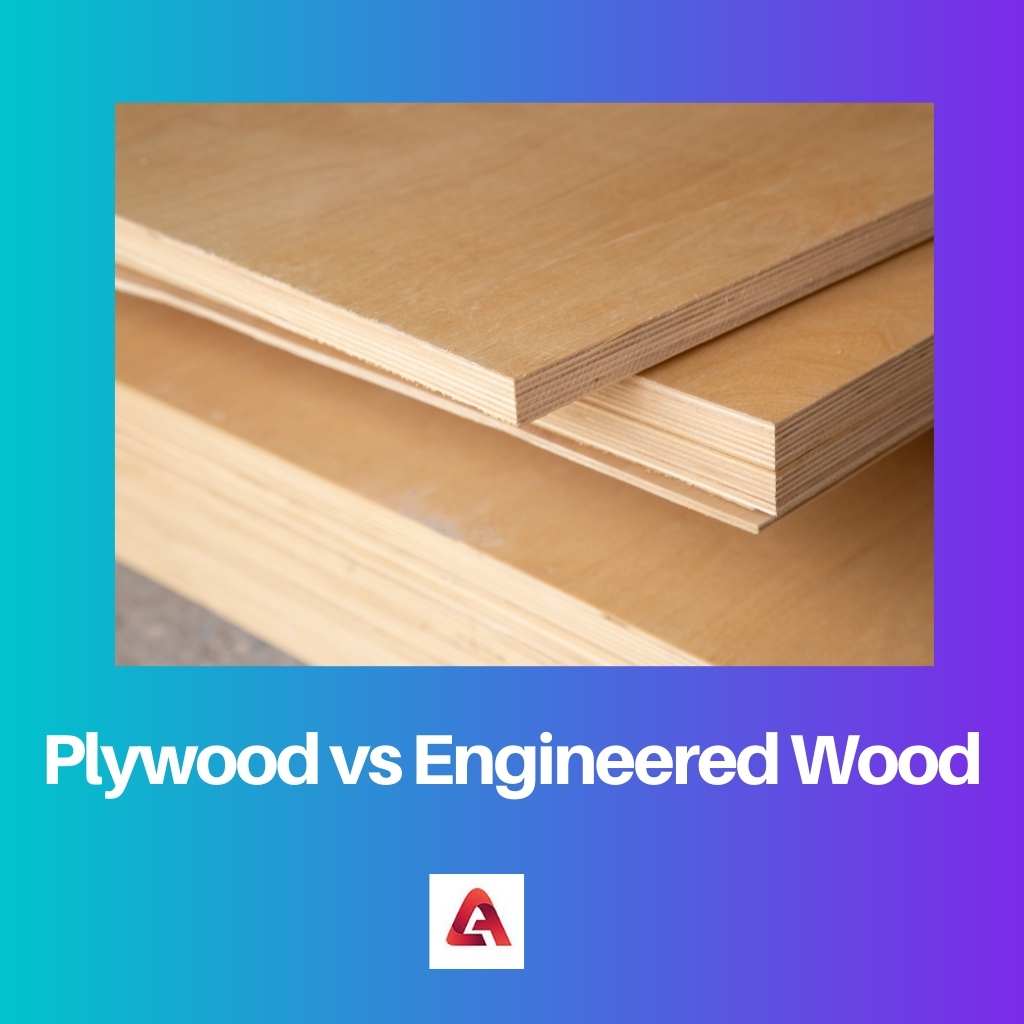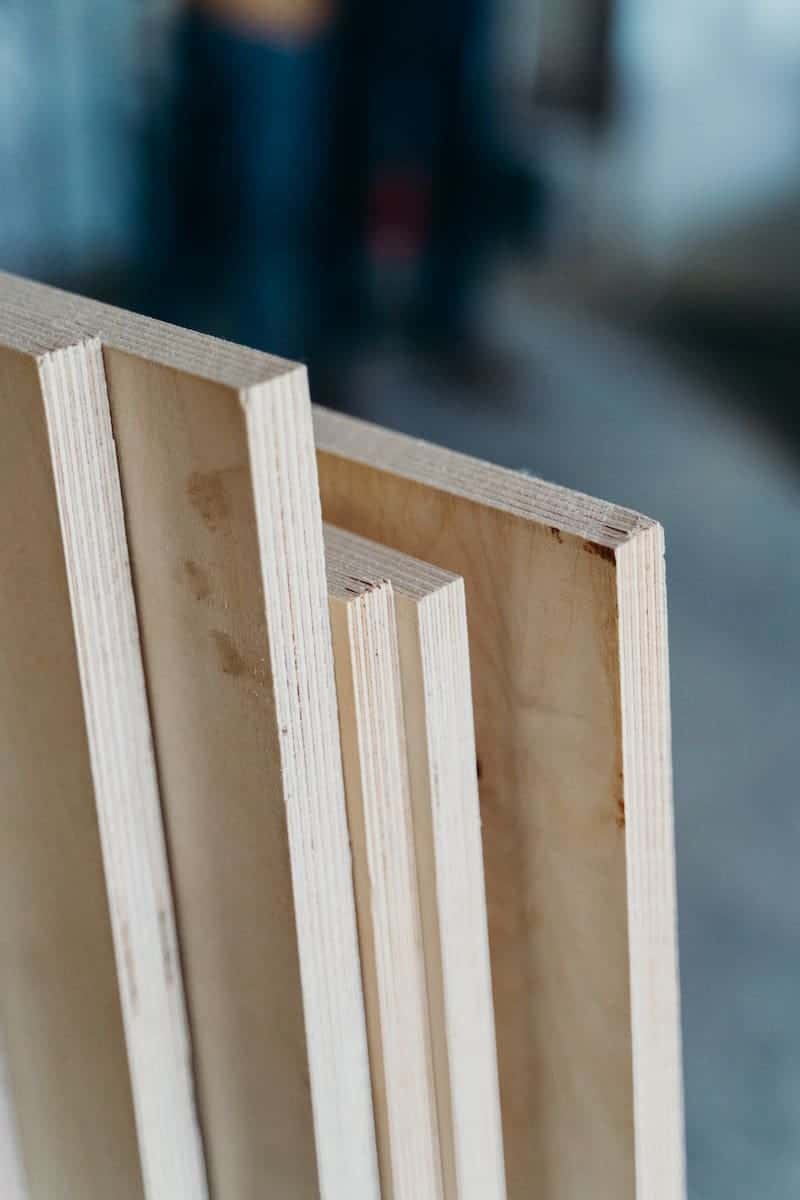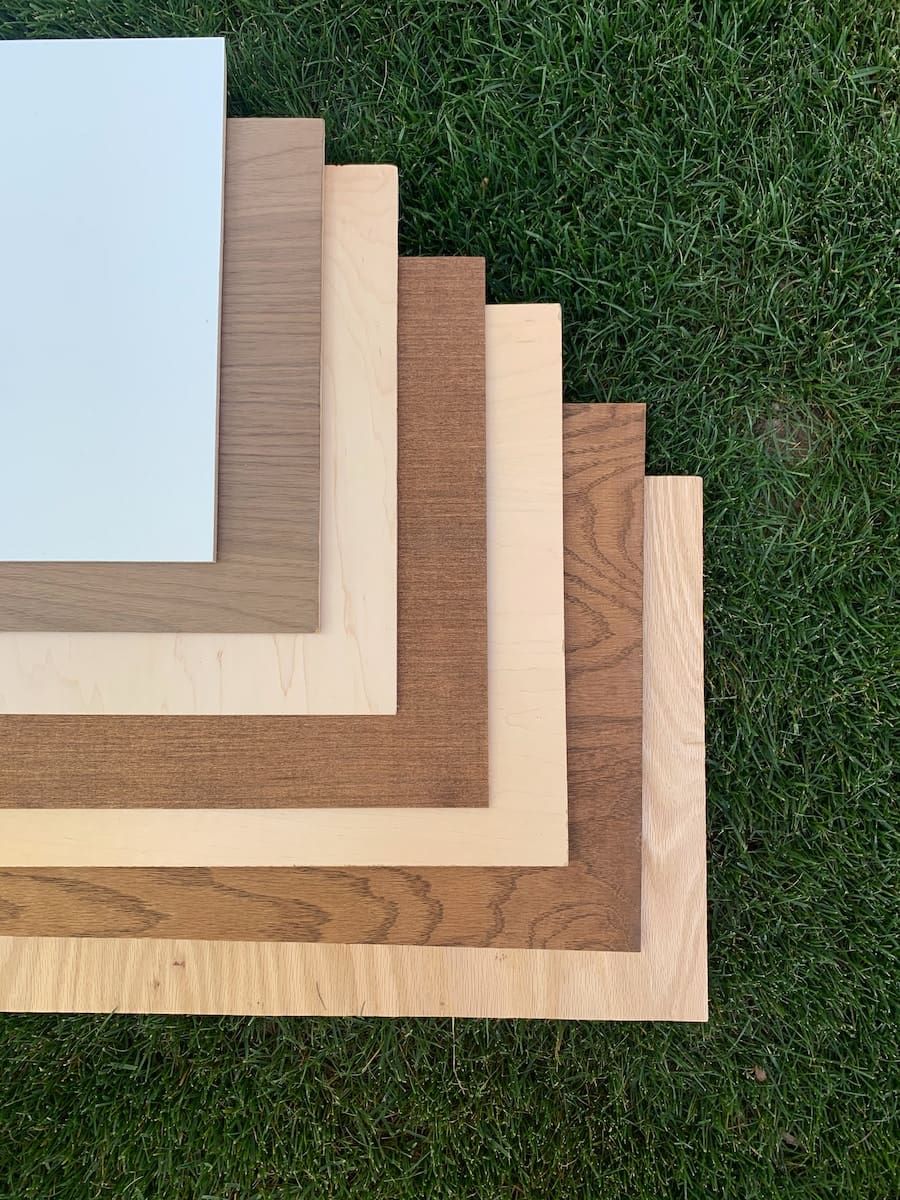Wood is a fibrous substance that has been used by mankind for thousands of years for various purposes like construction, furniture, paper, fuel etc.
In the year 2011, it was found that the earliest plant that gave wood was some 350 to 400 million years old. The age of Wood can be determined by using Carbon dating.
Wood not only means the stem of the tree but various parts of trees as well that can be used to make wood fibre, woodchips etc. There are various types of wood like plywood, engineered wood, solid wood, softwood, mascot wood etc.
Key Takeaways
- Plywood consists of multiple layers of wood veneer glued together, while engineered wood comprises wood fibers or particles bonded with adhesives.
- Plywood has greater strength and stability than engineered wood.
- Engineered wood is more cost-effective and environmentally friendly than plywood.
Plywood vs Engineered Wood
The difference between Plywood and Engineered wood is that Plywood is made by using thin layers of piles that are glued together. On the other hand, Engineered wood is composed of different kinds of wood products that are manufactured either from particles, fibres, boards etc. put together. Plywood is one of the types of engineered wood only. Engineered wood can be of different types like hardwood, softwood, medium density fibreboard etc.

Plywood belongs to the family of Engineered wood. All the thin sheets of piles are glued together to make plywood. In Plywood, cellulose, resin, fibre is used to make it a composite material.
Plywood has some of the benefits like it doesn’t allow the wood to expand or shrink, it gives stability to the dimension of the wood, it makes the wood strong from all directions.
In Plywood, piles are attached in an odd number so that sheets can be balanced.
Engineered Wood is called by different names like mass timber, composite wood, man-made wood, manufactured board etc.
Engineered wood is composed of a range of wood products that are used for different things. Engineered wood is made from two things i.e. softwood and hardwood.
Engineered wood is versatile, meaning that it can be produced depending upon the need. Engineered wood is user friendly. It is very easy to cut, drill, join, and glue them. Mostly it is used to make furniture.
Comparison Table
| Parameters of Comparison | Plywood | Engineered Wood |
|---|---|---|
| Manufactured | Thin layers of wood veneer or piles glued together. | Composite materials like particles, binding strands, fibres, thin wood boards joined together with adhesives. |
| Types | Tropical, aircraft, hardwood, softwood, Decorative, marine, flexible etc. | Fibreboard, Particleboard, Laminated timber, Laminated veneer, plywood etc. |
| Advantages | Paintable, strong, water-resistant, Stainable etc. | Cost-effective, low maintenance, wide range, easy to install etc. |
| Disadvantages | Expensive, difficult to cut, not finished edges etc. | Fading, susceptible to water damage and moisture, heavy, sturdy, toxic etc. |
| Durability | Extremely durable | Long-lasting |
What is Plywood?
The term Plywood is derived from a French word meaning something that can be folded. Plywood has been made from ancient times.
It was used by ancient Greeks and Egyptians for building material by sticking the layers in perpendicular directions. Samuel Betham applied for the patent of Plywood in 1797.
He also gave the concept of laminating piles or wood veneer with glue. Characteristics of plywood include bending, resistance, ability to carry the great load, maximum stress etc.
Different types of Plywood are available, like Hardwood Plywood, Aircraft Plywood, Exterior Plywood etc. The process of joining wood veneer together and bonding them is called cross-graining.
Plywood helps in increasing the strength of the panel. It helps in reducing expansion and shrinkage. Plywood is differentiated because of different qualities like the type of thickness, adhesive, wood ply, and manufacturing process.
Plywood is cheaper than solid wood. It can be polished, painted and stained. Plywood is extremely durable and is long-lasting. Plywood does not get damaged easily with water. Nails and screws can be fitted in Plywood as well.

What is Engineered Wood?
Engineered wood is very much the same as solid wood. It has a lot of advantages because engineered wood is not natural. It is a man-made thing.
It can be used according to one’s preference and design to meet the requirements of the customer. It is versatile as it is available in different sizes, thicknesses, lengths.
It is very durable i.e. it can be used in different areas like construction, home project, industrial uses. Products made out of Engineered wood are made to maximize the natural strength and stiffness.
It is very easy to work on Engineered wood. Because it can be cut, drilled, glued, routed, fastened and joined together. Engineered wood is very sustainable as small trees can be used in it smacking rather than cutting large trees.
It is eco-friendly as it can help in the reduction of carbon emissions by replacing cement and steel. In many buildings where they are used, they act as a carbon sink.

Main Differences Between Plywood and Engineered Wood
- Plywood is manufactured from thin layers of wood veneer or piles glued together. Engineered wood is manufactured from composite materials like particles, binding strands, fibres, thin wood boards joined together with adhesives.
- Types of Plywood include Lumber core, Exterior, Overlaid, Structural, etc. Types of Engineered wood includes Fibreboard, Particleboard, Laminated timber, Laminated veneer, plywood etc.
- Advantages of plywood are that it can be Painted, strong, water-resistant, Stainable etc. Advantages of engineered wood are that it is cost-effective, low maintenance is required, a wide range of woods are available, very easy to install etc.
- Disadvantages of Plywood are it is expensive, difficult to cut, not finished edges etc. Disadvantages of Engineered wood are that it fades easily, is susceptible to water damage and moisture, is heavy and sturdy, sometimes becomes toxic because of adhesives etc.
- Plywood is extremely durable. Engineered wood has long-lasting durability.





